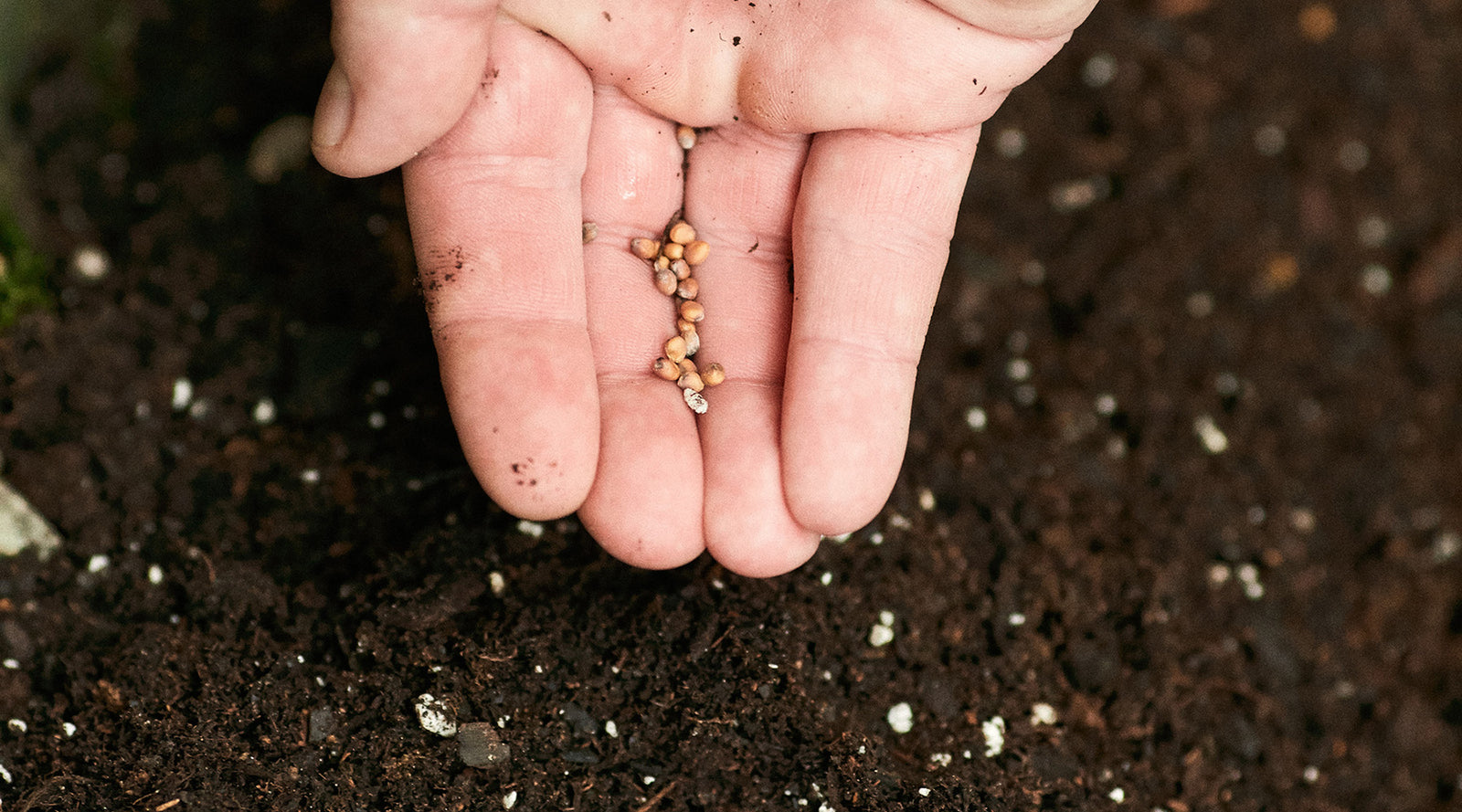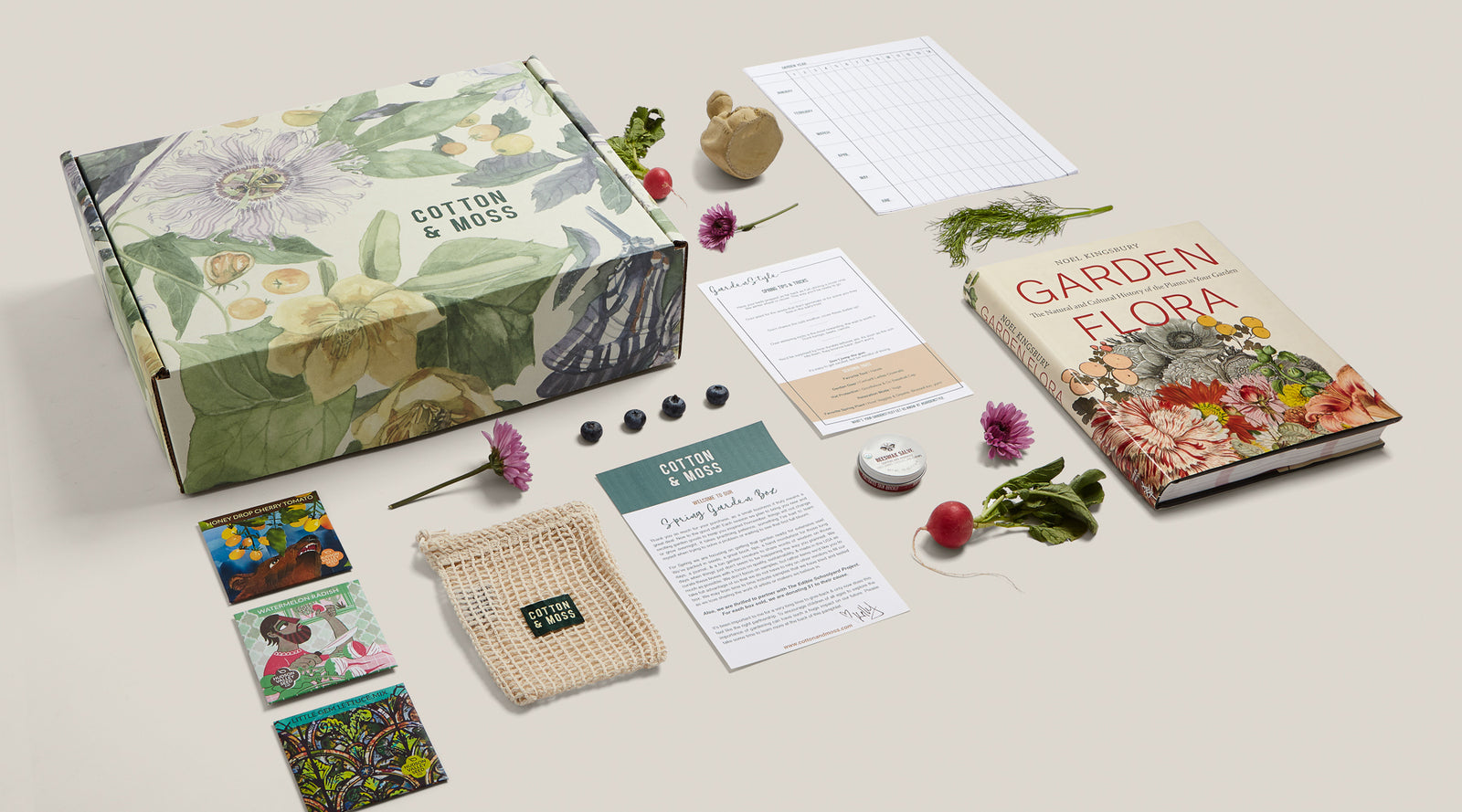Need Kokedama for a Special Event? | Email Us Info@cottonandmoss.com
September 03, 2020
The temperature is starting to drop and we are getting excited about a fall garden and veggies. There is still plenty more to do to make the most of the season.
Photography By Kelly Savoca
I spent a good portion of August cleaning up our beds. Due to the heat, I'd only pull up a few spent plants at a time. If you're quick to get to work - morning is a bit cooler. The remaining items in our beds are tomatoes, swiss chard, and pole beans.
I began planting squash in July & early August. While some might do this earlier, due to having a small space garden, I had to wait until there was room in the bed. We will not be planting much else as we plan to put a cover crop in one of the beds. Since our veggies seemed a little slow growing this year, we want to give the soil some added nutrients and rest so that come Spring it'll be in great shape!
Now I'll share what to plant in Fall, Winter, & even Spring:
Fall Garden Prep
1 | Organize & plant Fall annuals like mums, violas, and pansies. Pansies will last well into winter, especially in the south. They'll also provide some attractive color. Beware though the rabbits love to munch on violas and pansies.
2 | Plant root vegetables & greens. Yes, there is still time! Think carrots, radishes, turnips, spinach, & kale. Look for quick maturing varieties but veggies like kale don't mind cooler weather. You could even consider overwintering carrots for an earlier Spring harvest.
3 | Consider a cover crop. September is an ideal time in middle TN to plant one. Some examples are clover, alfalfa, rye, buckwheat, and oats. Depending on your needs, I recommend doing a little research on what crop is best suited to your space. The benefits of planting a cover crop include:
4 | Plan for Spring bulbs & corms. Now is a great time to order and decide how many and what types of bulbs you'd like to plant for Spring. Tulips, Daffodils, Hyacinth, Muscari, & Ranunculus just to name a few. These don't have to be planted right away but come October you'll want to consider getting them in the ground.

4 | Prepare the bed. In the winter, I added a light layer of compost and weeded. Since then some weeds had returned so I weeded again and loosened up my soil. Using a cultivator, I raked about 1” into the soil so that it wasn’t as compact.
5 | Hand threw my seed into the patch. If you are doing a larger patch of land it is sometimes recommended to mix your seeds with sand as this will allow you to see how much seed you are throwing and will make sure small and large seeds fall evenly but since my patch was so small I did without the sand.
6 | Lastly, taking a piece of cardboard and working my way around existing Dianthus I pressed the seeds into the soil. This is the fun part! You don’t even have to bury them like other seeds.

*Pro-tip – Do not do this the day before a heavy downpour. Since my bed was on a slight angle and due to the amount of rain the area flooded a bit and the seeds shifted. It’s ok if it rains the next day just beware of a big storm that might carry your seeds elsewhere.
What fall tips do you have? Tag us at #cottonandmoss on Instagram to share!
Also in Monthly Gardening

Seed Catalogs
January 19, 2022
It's that time of year when we start to long for warm spring days and starting seeds. Seed catalogs are one of the best resources for starting a garden.

Amaryllis and Paperwhites
December 13, 2021
Once the holidays pass and the new year begins, what do you want to see and smell around your home? We say fresh, fragrant flowers! Amaryllis and paperwhites are some of the easiest bulbs to grow.

Gifts For Mom & Gardeners | Top 10 Guide
November 09, 2021
The holiday season has arrived once again. We’ve compiled some of the best gifts for mom and gifts for gardeners. The two go together like butter on toast!
Join the mailing list to be the first to know when we share new events, unique goods, & more.
© 2025 Cotton & Moss.

